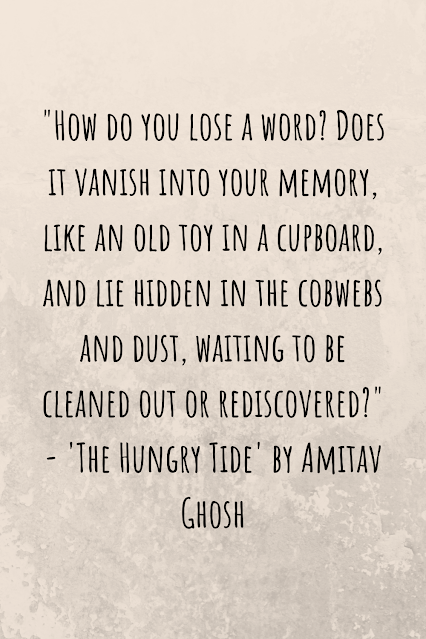The Hungry Tide is a book I picked up on a bit of a whim, and as it borders on being literary fiction (something I very rarely enjoy), I wasn't sure how much I'd like it. Although it definitely was a bit out of my comfort zone, I really did enjoy this one. I felt completely ensconced in the nature side of the book and it did make me cry - a sure sign I liked a book. I mean, if I cry it means I've connected to the characters and the storyline, plus we all need a good book to make us a little teary every now and then, right?
The Hungry Tide follows Piyali's journey to find the very specific type of dolphin she's studying as part of her job as a marine biologist. She's heard rumours that the dolphins at least used to live in the Sundarban islands in the Bay of Bengal and has travelled there to learn more about them, and hopefully find some. There she meets an illiterate fisherman named Fokir, whose intelligence lies in his knowledge of the waters. The book tells her story, Fokir's story and the story of a translator who helps them communicate.
The book touches on themes of class, education, family, Indian culture, folklore, animal studies (including tigers as well as dolphins), heritage and language. Amitav Ghosh writes scenery beautifully, and it really helped to make the story more vivid against the backdrop of the mangroves, islands and water. The plot was gripping and I felt myself drawn more and more to see what was happening with the dolphins, and I especially enjoyed the folklore stories interwoven into the main action.
Without trying to drop any spoilers, the story did get very dramatic, and I was tearing through the pages to see what happened before my heart got crushed a little. This was a beautiful story, and I learnt a lot both about the geography and history in the Sundarbans as well as about the nature in the area.
I would recommend this for fans of Where the Crawdads Sing and The God of Small Things.

No comments:
Post a Comment